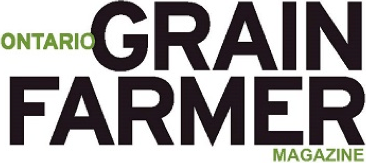Farm input price comparison between Ontario and nearby US states
Principal Investigator
Ken McEwan
Research Institution
University of Guelph
External Funding Partners
Agriculture and Agri-Food Canada (AAFC)
Project Start
March 2014
Project End
December 2016
Objectives
- Survey farm input suppliers and collect prices for relevant fertilizer, chemical, seed and fuel products for corn, soybean and wheat production three times annually.
- Report the average, minimum and maximum prices for all products surveyed by region.
- Compare which products are priced similar, lower or higher in Ontario versus the US after converting all US prices to Canadian equivalency.
- Monitor changes in input prices over time.
Impact
- The identification of the variability in farm input prices across Ontario and between Ontario and the US will allow producers to make informed management decisions when preparing annual crop budgets and purchasing inputs.
Scientific Summary
Crop producers in Ontario must continually strive to be low cost producers in order to be competitive at the global level. The US is close in proximity and is a strong competitor to Ontario producers for the main field crops of corn, soybeans and wheat. OMAFRA crop budgets indicate that the four crop inputs of fertilizer, pesticides, fuel and seed represented 56% to 68% of total variable costs on crop farms in 2016. Therefore, producers in Ontario want to ensure that the prices they pay for farm inputs such as fertilizers, chemicals, fuel and seed are not priced higher than similar products in the US. Input costs for crop production are extremely volatile and market prices for the crops also vary widely. As a result, producers face a considerable amount of financial risk. Ontario producers often feel that U.S. producers are able to obtain products at lower prices and therefore have a competitive advantage by having a lower cost of production. Having detailed farm input price data will enable all Ontario grain and oilseed producers to make informed management decisions with respect to the purchasing of inputs.
This project investigated the issue of farm input price differences between Ontario and the US. It was a continuation of previous work that started in 1993 to monitor and track trends in input prices between Ontario and nearby US locations. The information obtained from this project can assist Ontario producers in better understanding their costs relative to a major competitor. It gives them knowledge about where prices tend to be lowest and could enable them to actively seek out these products in order to remain cost competitive. The data collection methodology used for the project involved collecting the cash retail prices of 45 commercial farm inputs. Fertilizer and pesticide prices were obtained by personal visits and occasionally phone to a cross section of outlet stores located in Ontario, Michigan, Ohio and Indiana. Petroleum prices were collected by a combination of both personal visits and phone. The price collected is defined as the retail cash and carry price a commercial farmer would pay when purchasing a specific minimum amount of fuel, fertilizer, and pesticides. The exchange rate used to convert U.S. dollars into Canadian dollars was the Bank of Canada’s noon hour spot rate on the day the data is collected. All U.S. product prices were converted to Canadian equivalency by adjusting for exchange rate, container size, and concentration.
Ontario prices during the most recent five year period from 2012 to 2016 have averaged 7% higher in the fuel products category, 3% higher in the fertilizer products category, and 55% higher in the pesticides category. The exchange rate conversion averaged $1 U.S. dollar = $1.13 Canadian dollars. The big difference between the two time periods is the strong Canadian dollar relative to the U.S. dollar in 2012 and 2013 which resulted in the increased price spread between the Ontario and U.S. pesticide products group. Price changes varied and depended on the individual pesticide product. Some of the products higher priced in Ontario included: Regular Unleaded Gasoline +24%; Diesel Fuel +15%; Urea +4%; 2,4‐D Amine +65%; Dual II Magnum +21%; Sencor +27%; Pardner +24%; and Sevin XLR +31%. Some of the products lower priced in Ontario included: Mono‐Ammonium Phosphate ‐1%; Pursuit ‐7%; Prowl ‐3%; Bravo ‐ 12%; Caramba ‐11%; and Halex ‐21%.
Over the twenty-four year period from 1993 to 2016, Ontario prices have averaged 13% higher in the fuel products category, 4% higher in the fertilizer products category, and 24% higher in the pesticides category. This comparison is based on Canadian dollars and units. During this time the exchange rate conversion averaged $1 U.S. dollar = $1.24 Canadian dollars. The exact implications at the farm level of this variability between Ontario and the U.S. for farm inputs depended greatly on individual producer product selections and purchase timing. For example, Roundup products in the project have averaged 31% lower in Ontario than the U.S. from 1993 to 2016 and 12% lower from 2012 to 2016.
Project Related Publications
Popular articles:
Ontario Grain Farmer: Research Roundup, November 2014
Extension articles:
https://www.ridgetownc.com/research/research_reports_profile.cfm?profile=kmcewan&name=Ken%20McEwan

